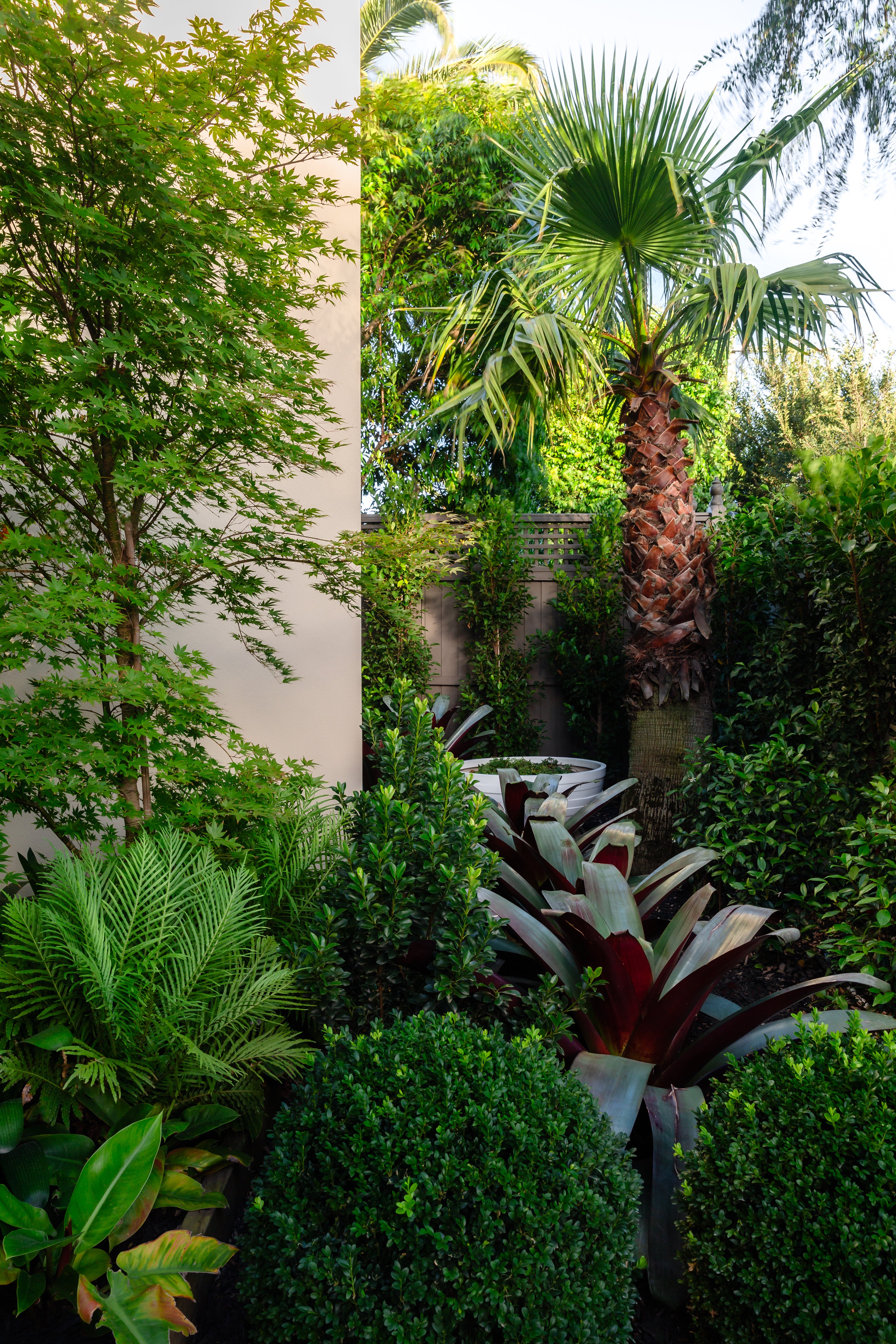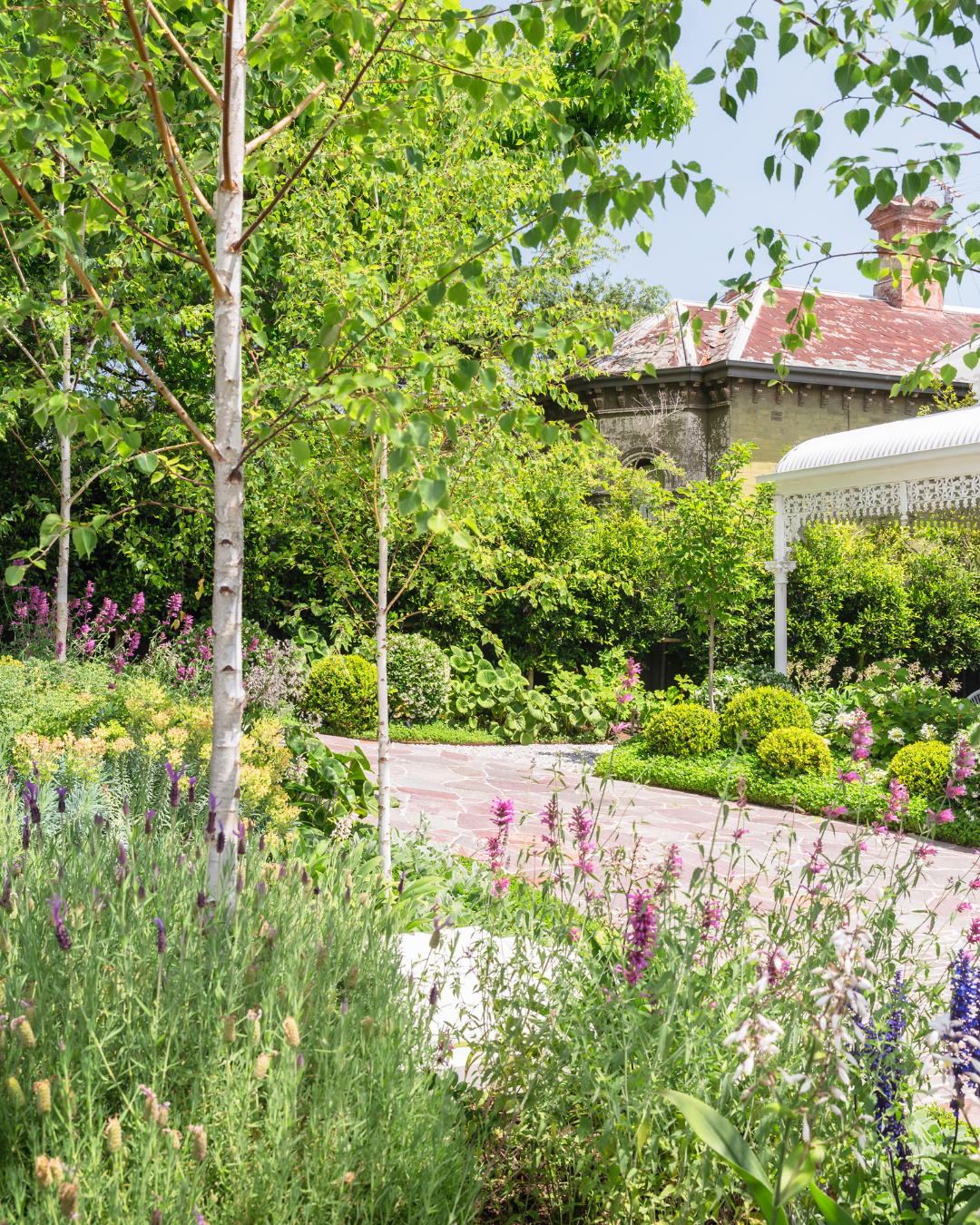Creating a grand entrance to your property is a statement of style, elegance, and sophistication. Avenue planting is one of the most effective ways to achieve this, creating a welcoming, lush corridor that leaves a lasting impression. Whether looking for an avenue to line a driveway or make a striking focal point, selecting the right trees is essential. Australia has many beautiful trees perfect for avenue planting, combining aesthetic appeal with functionality. Here, we explore three exceptional options: Quercus palustris (Pin Oak), Pyrus calleryana 'Capital', and Corymbia maculata (Spotted Gum).
Why Avenue Planting?
Avenue planting provides both visual and practical benefits to your landscape. It not only frames the entrance to your property, guiding guests towards the home, but also enhances curb appeal, increases property value, and adds a timeless sense of grandeur. Avenue trees can create a structured, cohesive look, drawing the eye along the planted route while softening architectural lines and blending the artificial environment with nature. You can control the avenue's appearance, density, and impact by carefully selecting trees with specific growth habits.
1. Quercus palustris (Pin Oak)
If you're searching for a tree that delivers year-round interest with bold autumn color, look no further than Quercus palustris, commonly known as Pin Oak. This stately deciduous tree is highly regarded for its symmetrical shape and strong structure. Native to North America, the Pin Oak has become a popular choice in Australian landscapes due to its adaptability and striking form. It features a pyramidal crown that creates a neat, orderly silhouette, perfect for formal avenue plantings. In autumn, the tree transforms with stunning displays of fiery red to deep bronze foliage, making it a standout feature even when most other trees are shedding their leaves.

Key Facts
- Mature Height: 18-25 meters
- Mature Width: 10-15 meters
- Best Uses: Avenue planting, feature tree, shade tree
- Leaf Appearance: Glossy, deep green in spring and summer, turning vibrant red or bronze in autumn
- Rate of Growth: Moderate to fast
- Tolerates: Urban conditions, seasonal flooding, clay soils
Why It’s Perfect for Avenue Planting
Quercus palustris is a versatile tree that thrives in various soil types, making it a strong candidate for different environments. Its tidy, symmetrical shape ensures that each tree contributes to a visually harmonious avenue, while the vibrant autumn color adds a seasonal element that creates a dramatic entrance. The pyramidal growth habit also ensures the canopy stays upright and structured, allowing clear sightlines underneath the trees. This makes it ideal for lining driveways or walkways, guiding visitors toward the property with a natural, elegant touch. Once established, Pin Oak requires little maintenance, making it a low-effort choice for high-impact results.
2. Pyrus calleryana 'Capital'
For those seeking a more compact tree with a refined, columnar shape, Pyrus calleryana 'Capital' is an excellent choice. Known for its narrow, upright form, this ornamental pear variety is perfect for tight spaces where width may be a constraint. The slender nature of the tree ensures that it won't infringe on driveways or paths, yet it still provides the height and elegance required for a grand avenue. In spring, 'Capital' sparkles with a profusion of white blossoms, followed by glossy green foliage throughout the growing season. In autumn, the leaves shift to rich shades of red and burgundy, offering a stunning seasonal display.

Key Facts
- Mature Height: 11-12 meters
- Mature Width: 3-4 meters
- Best Uses: Avenue planting, screening, feature tree
- Leaf Appearance: Dark green, glossy leaves in summer, transitioning to red and burgundy in autumn
- Rate of Growth: Moderate to fast
- Tolerates: Urban pollution, drought, poor soils
Why It’s Perfect for Avenue Planting
The narrow form of Pyrus calleryana 'Capital' makes it particularly well-suited for creating a formal, clean-lined avenue. The tight columnar shape helps maintain a refined appearance, and its seasonal blossom and foliage changes add color and interest throughout the year. 'Capital' is ideal for urban environments where space may be limited, but an upscale, polished look is desired. Additionally, the tree’s resilience to poor soil conditions and urban pollution ensures it will thrive even in more challenging landscapes. This makes 'Capital' a sophisticated, low-maintenance option for modern avenues, particularly for clients seeking beauty and practicality.
3. Corymbia maculata (Spotted Gum)
Corymbia maculata, or Spotted Gum, is a standout choice for a more distinct Australian aesthetic. This native eucalyptus species boasts smooth, mottled bark in shades of grey, brown, and cream, lending a striking visual contrast to its deep green leaves. With its towering height and elegant, slightly weeping branches, Spotted Gum adds a touch of natural grandeur to avenue plantings. Though primarily chosen for its distinctive bark and form, this tree also offers shade and shelter, making it both ornamental and functional. Corymbia maculata is also highly drought-tolerant, thriving in various Australian climates, from coastal regions to inland areas.

Key Facts
- Mature Height: 20-30 meters
- Mature Width: 10-15 meters
- Best Uses: Avenue planting, shade tree, native feature tree
- Leaf Appearance: Long, lance-shaped leaves with a dark green hue
- Rate of Growth: Fast
- Tolerates: Drought, poor soils, coastal conditions
Why It’s Perfect for Avenue Planting
Corymbia maculata is the ideal tree for creating an avenue that celebrates the beauty of Australia’s native flora. Its impressive height and stunning bark texture make it a visual focal point in any landscape. The tree’s large size also provides substantial shade, making it perfect for longer driveways or expansive properties. Beyond aesthetics, Spotted Gum is known for its resilience to tough Australian conditions, including drought and coastal winds, ensuring it will thrive with minimal intervention. This makes it a perfect choice for clients seeking a low-maintenance yet striking avenue planting that offers functionality and a sense of place.
Conclusion
Avenue planting is more than just a landscaping choice; it reflects taste, style, and the desire to create a grand entrance that leaves a lasting impression. Whether you opt for the symmetrical elegance of Quercus palustris (Pin Oak), the refined narrow form of Pyrus calleryana 'Capital', or the bold, native beauty of Corymbia maculata (Spotted Gum), each of these trees offers unique characteristics that enhance the landscape while requiring minimal maintenance. With careful selection, you can create a thriving, vibrant avenue that welcomes guests and elevates your property’s entrance.
FAQs
What is the best tree for a narrow avenue?
Pyrus calleryana 'Capital' is an excellent choice for narrow avenues due to its slender, columnar shape.
Which tree provides the best autumn color?
Quercus palustris (Pin Oak) offers spectacular autumn colors, ranging from fiery red to deep bronze.
Can native trees be used for avenue planting?
Yes, Corymbia maculata (Spotted Gum) is a fantastic native option, known for its striking bark and towering height.
How far apart should avenue trees be planted?
The spacing depends on the species, but trees like Pin Oak and Spotted Gum should be planted 8-12 meters apart to allow for proper growth and canopy spread.










